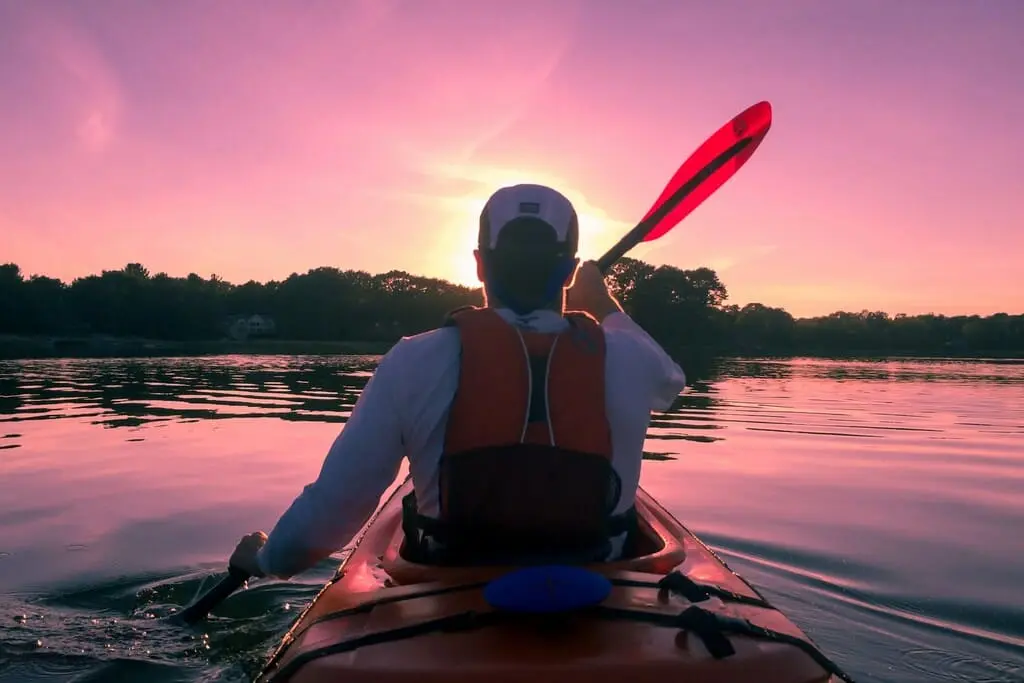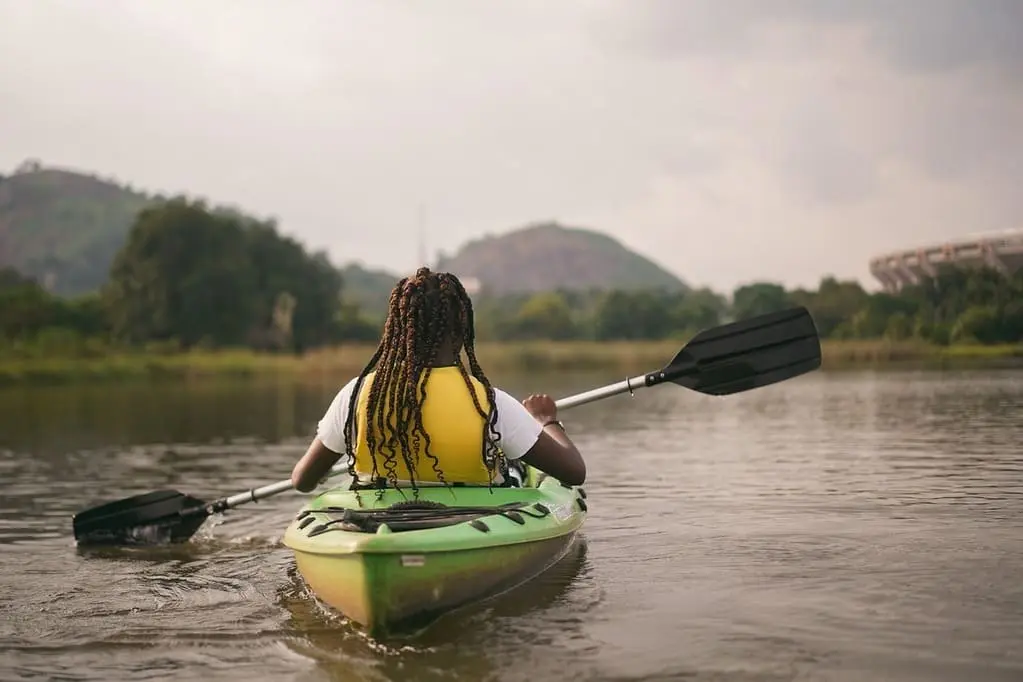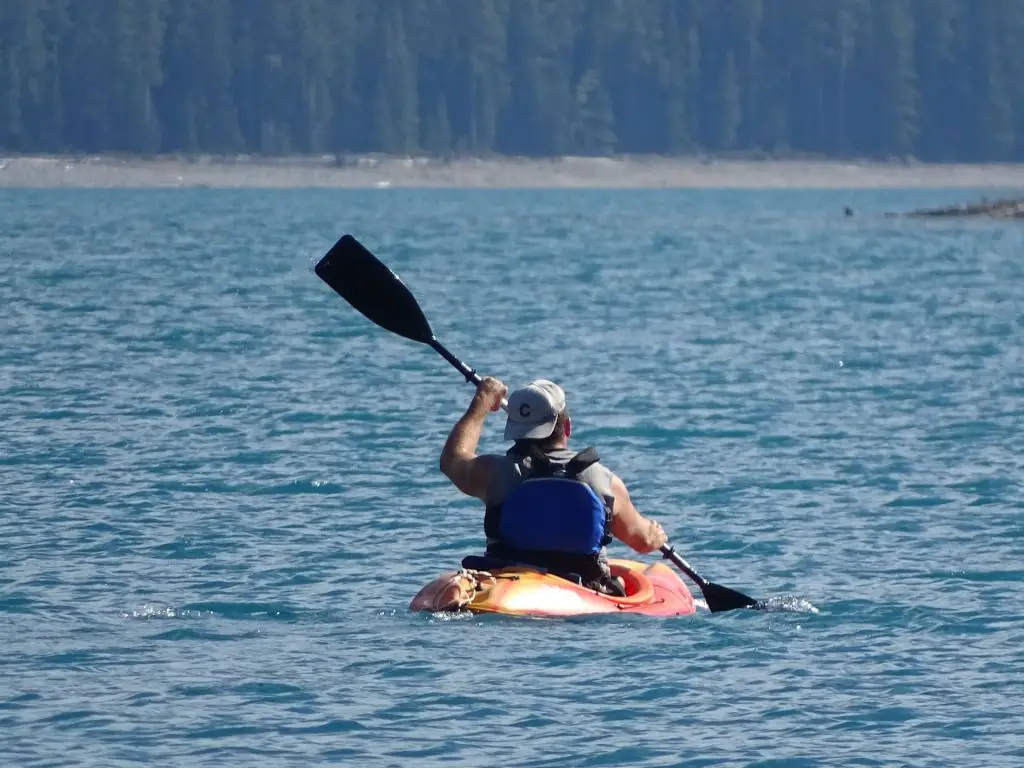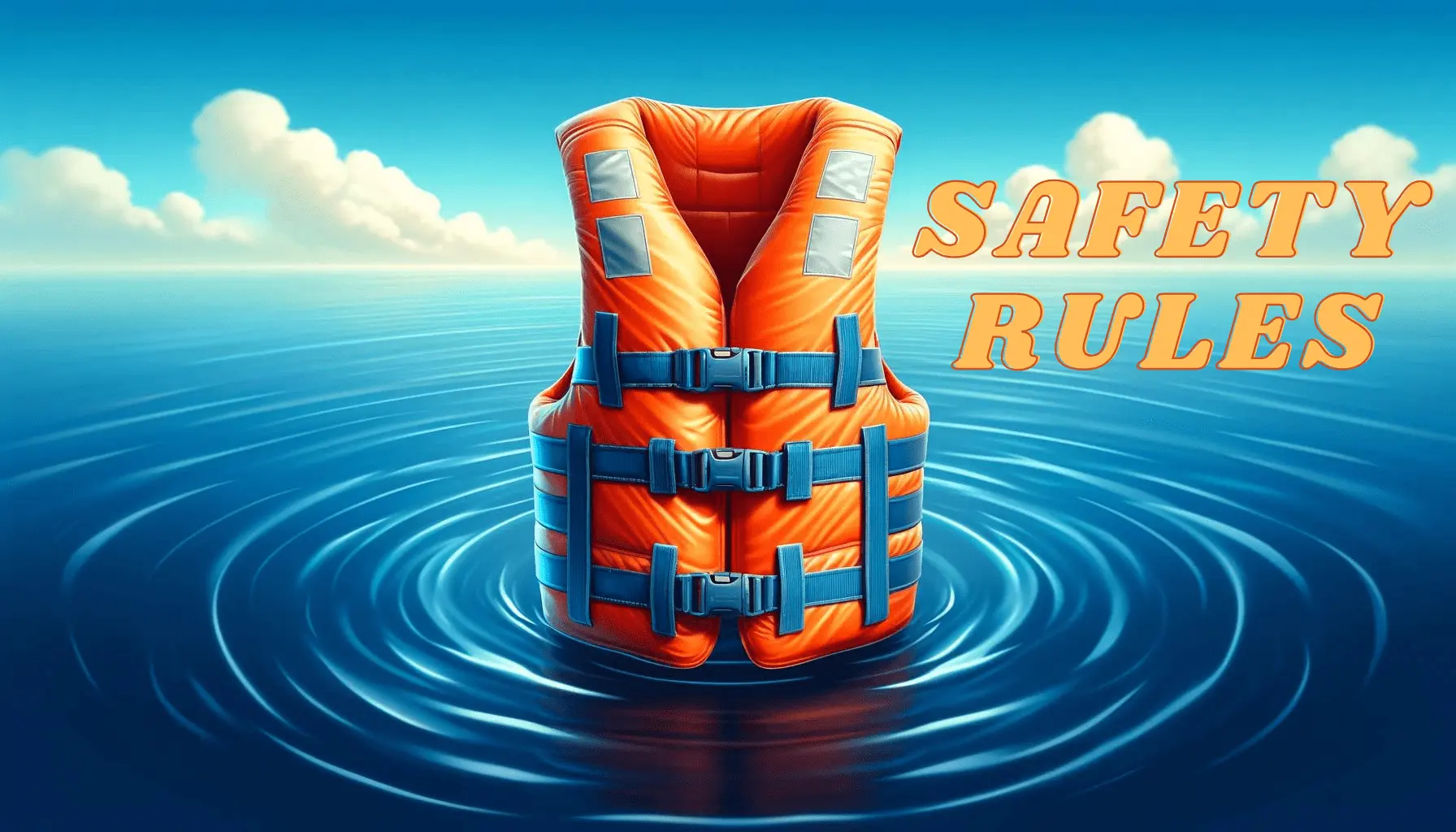Embarking on a solo kayaking safety adventure stirs a mix of exhilaration and contemplation. The unique blend of serenity and self-reliance attracts many to the sport, but it comes with an inherent need for caution and expertise. Understanding how to kayak alone requires not only paddling skills but also a deep respect for the unpredictable nature of water. Whether you’re a solitude seeker or a determined adventurer wanting a safe solo paddling adventure, there are essential steps to ensure safety and enjoyment. By preparing diligently, and respecting both limits and possibilities, the freedom of paddling alone becomes a canvas for personal achievement and discovery.
Key Takeaways
- Beginners should gain experience in group settings before attempting to paddle solo.
- Advance preparation in choosing suitable destinations increases the likelihood of a safe trip.
- Investing in the proper gear, like life jackets and signaling devices, is non-negotiable.
- Understanding and preparing for local weather conditions is crucial for safety on the water.
- Informing someone of your plan is a simple yet critical step in solo kayaking safety.
- Mastering capsizing and re-entry techniques enhances self-reliance during solo excursions.
- Choosing efficient loading systems, such as the EZ Rec-Rack, facilitates independent handling of equipment.
Understanding the Risks and Rewards of Solo Kayaking
Solo kayaking offers a unique blend of challenges and joys, attracting those who seek a personal connection with the vastness of open waters and the quietude of nature. The rewards of paddling alone range from the tranquility of solitude to the empowerment that comes from self-reliance. Yet, the risks are equally real, demanding a proactive approach to safety and situational awareness to ensure rewarding experiences on the water. This section delves deep into the crucial aspects of evaluating weather conditions, assessing skill level, and preparedness for kayaking alone—all integral to navigating the risks and rewards of solo kayaking.
The Thrill of Independence on the Water
The appeal of solo kayaking is deeply rooted in the independence it grants. It’s a chance to chart your own course and paddle at your own rhythm, free from the compromises required in a group. Yet, with this freedom comes a responsibility to be fully aware of the unique challenges that await. The allure of solitude can swiftly be overshadowed by unforeseen circumstances without proper planning and foresight.
Evaluating Weather Conditions for Safe Solo Expeditions
A successful solo kayaking venture hinges on evaluating weather conditions meticulously. Weather can be unpredictable, turning serene waters tumultuous in moments. For anyone embarking on a kayak trip alone, staying updated on local weather patterns is not just recommended; it’s essential. By respecting the unpredictability of nature, kayakers can adjust their plans to avoid hazardous scenarios, such as avoiding a low head dam, ensuring their safety and enjoyment.
Assessing Personal Skill Level and Preparedness
Understanding one’s own capabilities through assessing skill level is a cornerstone of preparedness for kayaking alone. It’s about honest self-appraisal and recognizing when more practice is needed to handle potential challenges that may arise in solitude on the water. Paddlers must ensure that they are experienced in key skills such as launching, navigating, and emergency procedures before considering a solo trip. This introspective approach to skill assessment can greatly diminish the inherent risks and amplify the numerous rewards that come with solo kayaking.

Essential Gear for Solo Kayaking Safety
Embarking on a solo kayaking adventure demands meticulous attention to the equipment you carry. Tailoring your gear for solo kayaking not only elevates your safety but also ensures an uninterrupted experience. Let’s delve into the kayak safety essentials vital for every paddler striking out on their own.
A quintessential item is a life jacket, specifically a Personal Flotation Device (PFD) designed for kayakers, offering not only buoyancy but also comfort and mobility. Furthermore, safeguarding your belongings with a waterproof bag or case keeps critical items such as maps and first-aid kits dry.
Despite the tranquil waters you may navigate, emergencies can surface without warning. Having a fully charged cellphone, even in areas bereft of signal, can be indispensable in crises. Paring this with a comprehensive signaling kit is wise, encompassing both auditory devices like a whistle and visual aids such as a flashlight; the latter can be crucial during low visibility conditions or at night.
- PFD (Personal Flotation Device) designed for kayaking
- Waterproof dry bag or case for essentials
- Fully charged cellphone for emergencies
- Signaling kit (whistle and flashlight)
- Additional navigation aids depending on location and journey length
- Spare paddle
- VHF marine radio for long-distance communication
- Nutritional sustenance: snacks and water supply
If your journey takes you far from the safety of the shore, consider the addition of a flare gun to your safety tips for solo kayaking. A spare paddle also becomes non-negotiable, ensuring you are never stranded due to equipment failure. Should communication be key, a VHF marine radio serves well for reaching out in vast waters.
The simplicity of sustenance like snacks and water is often overlooked, yet it is crucial, particularly if you find yourself waiting for rescue. Lastly, conducting an equipment check before setting off is a step you cannot afford to miss. This habit secures your readiness, making sure your gear stands up to different challenges that solo kayaking may throw your way.
Remember, investing in the right gear for solo kayaking is investing in your safety. The tranquility of paddling alone is a reward in itself, but only with the right preparation and gear can it be truly savored.

How to Kayak Alone: Developing Key Paddling Techniques
Embarking on a kayaking adventure solo requires a blend of confidence, skill, and preparation. The art of solo paddling techniques not only offers the reward of personal accomplishment but also demands the discipline of developing key paddling techniques. Whether you are looking to master solo launching and landing or seeking to refine your ability in practicing capsizing and re-entry skills, the journey towards kayak self-sufficiency is both challenging and rewarding.
Mastering Solo Launching and Landing
One of the first steps to confident solo kayaking is mastering the launch and landing. This process can be as critical as the paddle stroke itself. You’ll want to become adept at handling your craft, seamlessly transitioning from shore to water and back again. Here’s how:
- Become familiar with your kayak’s weight and balance points for easy handling.
- Develop a smooth sequence of movements that allows for an efficient launch.
- Refine your technique to minimize stress on your body and the kayak’s structure.
Practicing Capsizing and Re-Entry Skills
When paddling solo, the ability to recover from a capsize is essential. It is recommended that every solo kayaker practice the wet exit and re-entry until it becomes second nature. To increase your self-reliance:
- Practice capsizing in controlled conditions to remain calm under real circumstances.
- Understand the re-entry process thoroughly, whether using a paddle float or rolling up.
- Regularly test your skills to keep them sharp and reliable.
Navigating and Planning Solo Trips
Navigating the waters alone calls for meticulous planning and an understanding of your surroundings. Every solo trip should start with a well-thought-out plan and the skills to adapt to changing environments. The following are central to navigating solo trips:
- Learn to read water currents, weather signs, and navigational charts.
- Always leave a float plan with someone reliable and check in upon return.
- Develop the foresight to anticipate and adjust your course in response to unforeseen events.
Embark on your solo journey with confidence, knowing that you have put in the work to master the crucial skills of kayaking. Every stroke you take is not only a movement forward but also a testament to your dedication and love for this singular aquatic adventure.

Preparation Strategies for Paddling Alone
When planning to kayak solo, implementing effective preparation strategies for paddling alone is crucial for a safe and rewarding experience. By investing time in preparation, kayakers can embrace the profound benefits of kayaking alone, such as experiencing the tranquility of nature and cultivating self-reliance. To assist in your planning, consider the following strategic approaches:
- Create a detailed float plan, and always inform someone responsible about your route, expected return time, and your post-arrival check-in procedure.
- Choose your kayaking location wisely. Look for the best places to kayak solo that match your skill level, favoring serene lakes or sheltered bays that have minimal traffic or are protected from strong marine currents.
- Conduct regular weather checks to stay ahead of potentially hazardous conditions, choosing to paddle only when conditions are favorable.
- Maintain personal fitness to ensure you have the strength and endurance for solo paddling, and wear appropriate clothing for both the weather and water conditions.
- Balance your safety equipment carefully, understanding that overloading your kayak can become a potential liability.
- Fostering consistency by kayaking frequently, ideally weekly, will hone your skills and broaden your familiarity with various kayaking conditions.
While the camaraderie of group paddling is undisputed, the solitary venture of kayaking alone holds its own allure. The serenity and personal reflection it affords are unmatched, making the necessary preparations not just a safety measure, but a gateway to a deeply fulfilling experience.
Lastly, always remember that the secret to a fulfilling solo paddling adventure lies in the joy of the journey itself, underpinned by thorough preparedness and respect for the natural environment.
Conclusion
Embarking on a solo kayaking journey is an endeavor that commands respect for the forces of nature and demands meticulous preparation. This guide has underscored that while the path to mastering kayaking alone may be fraught with challenges, the rewards of a solo paddling adventure can be profound. To navigate these waters safely, the solo kayaker must equip themselves with not just the essential gear, but also a trove of knowledge and skills honed through experience and training.
The fusion of personal skill development, environmental awareness, and a thorough safety plan form the trinity of solo kayaking success. This isn’t just a sport—it’s a pursuit of autonomy on the water, a test of self-reliance, and a chance to connect with the waterways in their purest forms. The solace found in the gentle lapping of the waves against one’s kayak is an experience that paddlers often seek, and it is within reach with the right attitude and approach.
As we wrap up this guide, it bears repeating that the world of kayaking alone is accessible to those who are prepared to embrace both its serene moments and its unforeseen challenges. By committing to a regimen of continuous learning, vigilant monitoring of weather and water conditions, and investing in equipment that upholds safety standards, the solo paddler can savor each voyage, confident in their ability to handle what lies ahead. It is in the quiet rhythm of the paddle stroke where one discovers the true essence of kayaking, transforming every outing into a safe, empowering, and enriching experience.
FAQ
What are the primary concerns of solo kayaking safety?
Primary concerns of solo kayaking safety include understanding weather conditions, having the necessary paddling skills, possessing the right safety gear, and having a clear plan for emergencies. Ensuring gear for solo kayaking is functional and appropriate for the conditions is also crucial for a safe solo paddling adventure.
How can one adequately evaluate weather conditions for a safe solo kayaking trip?
Evaluating weather conditions involves checking local weather forecasts, understanding the water body’s dynamics, and being aware of changes that could occur during the trip. Knowledge of the environment helps a solo kayaker make informed decisions and choose the appropriate time and place for paddling alone.
What should a kayaker consider to ensure preparedness for kayaking alone?
Preparedness for solo kayaking includes assessing skill levels, ensuring physical fitness, having a float plan, rehearsing self-rescue techniques, and carrying necessary safety gear. Planning around personal capabilities and bringing appropriate emergency equipment also contribute to overall preparedness.
What essential gear should a solo kayaker carry?
Essential gear for solo kayaking includes a personal flotation device (PFD), a whistle and other signaling devices, a waterproof case or bag for personal items, a spare paddle, and communication equipment like a VHF radio. The safety tips for solo kayaking also recommend a fully charged cellphone and a flare gun for longer or more isolated trips.
Which solo paddling techniques should kayakers develop for solo trips?
Solo kayakers should develop efficient launching and landing techniques, re-entry skills after capsizing, and effective navigation planning. These key paddling techniques ensure that a solo kayaker can manage their kayak independently and safely while out on the water.
What are the best places to kayak solo?
The best places to kayak solo are typically calm, sheltered waters that match the paddler’s skill level. Destinations like lakes, slow-moving rivers, and coastal bays with minimal boat traffic are ideal for solo paddlers. Before kayaking alone, it’s important to research and choose locations known for their safety and accessibility.
How can one reap the benefits of kayaking alone while maintaining safety?
To enjoy the benefits of kayaking alone while staying safe, paddlers should have sufficient solo paddling experience, carry the right gear, and remain vigilant to changing conditions. Regular practice, thorough planning, and building self-reliance go a long way in making solo kayaking a rewarding and safe activity.



